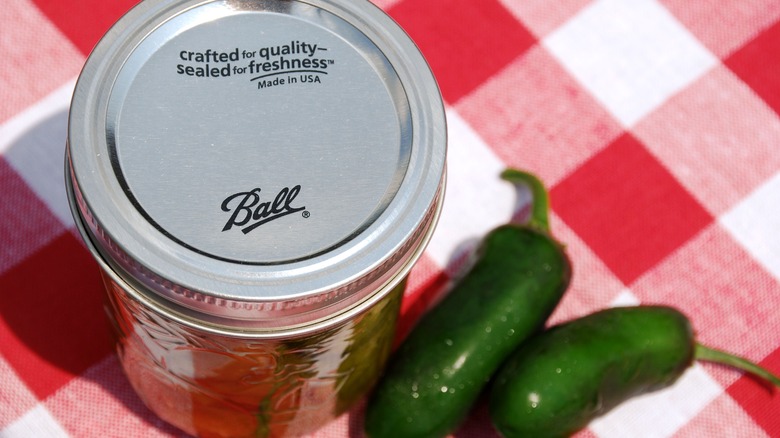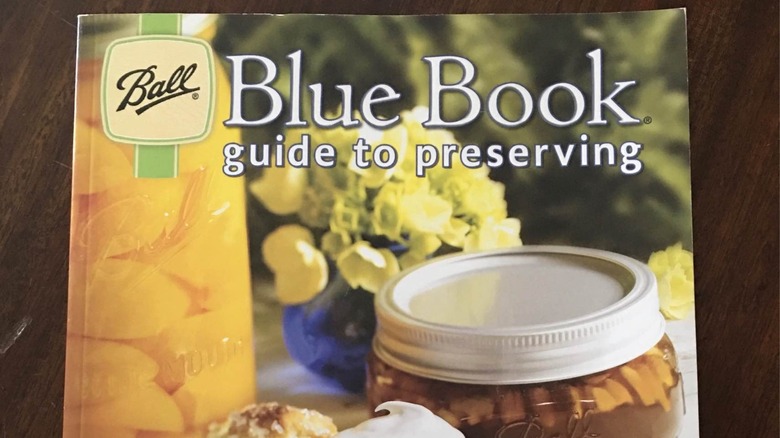Why The Ball Jar Company Created Its Famous Blue Book Of Canning
If you've ever tried your hand at home canning your own food, then chances are you've referenced what is often revered as the go-to source for safe canning, also known as the "Ball Blue Book of Canning," as Wide Open Eats details. The book has been around for decades and was originally published in 1938, but if you don't have access to the antique publication, don't worry, a PDF version can be found online.
Although the current edition is a bit different, mainly in that it's been updated for modern food preservation, and contains a few more recipes than the original document, home canners everywhere still find the value and information in this book to be priceless. As Healthy Canning details, this book outlines recipes, along with the proper safety procedures for water bath and pressure canning methods. So what prompted the Ball Corporation to publish this book decades ago, and why has it endured with home canners?
A much needed source
As mentioned earlier, to this day the "Ball Blue Book of Canning" is looked upon as one of the main authorities for home canning, as mentioned by The Spruce Eats. By creating the book, the jar manufacturing company positioned itself to not only educate home canners and provide them with value by including tested recipes but according to verbiage in the original edition of the book, the inspiration behind it was also part of a greater effort to educate the everyday American on the importance of food preservation.
Since it was published during the Depression and the period between the World Wars, there was a need for people to produce food in their own backyards, also known as war gardens, and later as "victory gardens," per History. Ramping up home food production meant people needed to know how to preserve the food so it would last beyond the harvest period. The Ball book filled in this knowledge gap, and as noted in the foreword of the original book, it taught people the essential skill of preserving fruits and vegetables in an economic way that would prevent spoilage. The tradition of home canning food endures today and so does the value found in the famous canning book.

